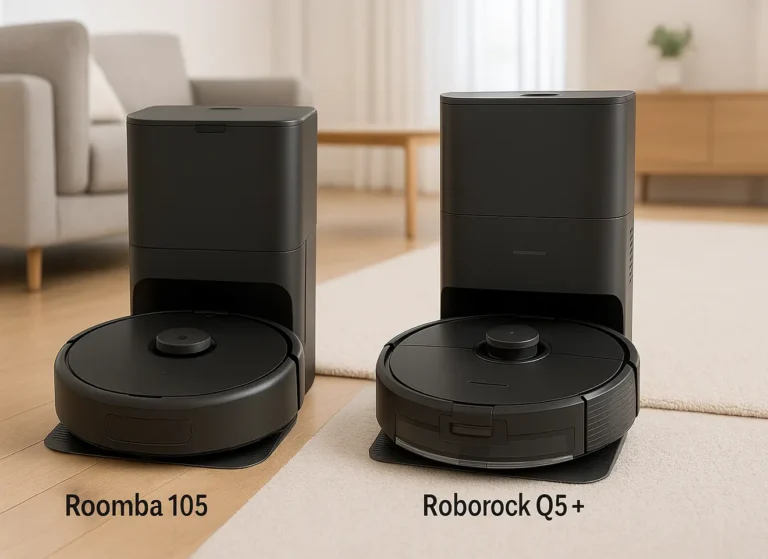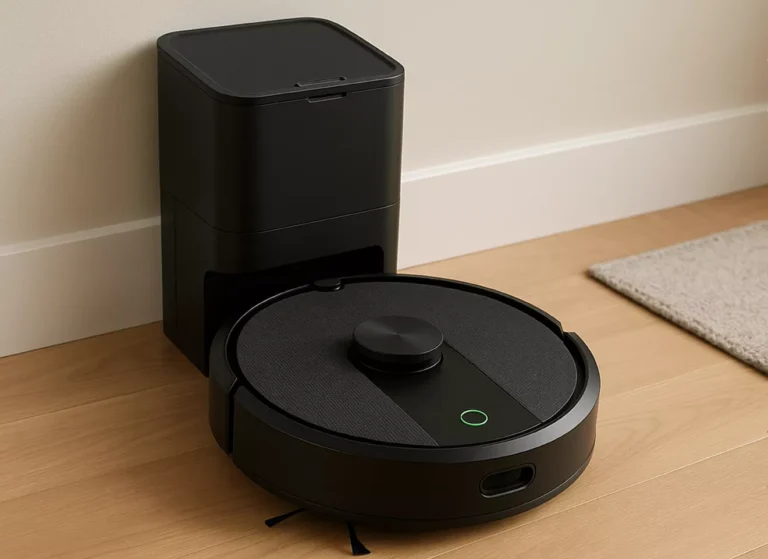Xiaomi TV Box S 2nd Gen Review: What Nobody Tells You Before You Stream
A compact Google TV 4K streamer with Dolby Vision/HDR10+, Dolby Atmos/DTS-HD passthrough, dual-band Wi-Fi, and Bluetooth 5.2. Smooth enough for everyday apps, voice search is handy, and the remote is thoughtfully laid out. Storage and ports are limited, but for the price it’s a tidy way to modernize any TV.

This image has been generated using AI for illustrative purposes only and does not represent an actual product image
Getting to Know Xiaomi TV Box S 2nd Gen: What You Need to See First
This box is for anyone with a decent TV that’s stuck with clunky built-in apps—or no apps at all. Plug it into HDMI, connect to Wi-Fi, sign in with your Google account, and you’re greeted by the Google TV interface that organizes all your services into one home screen.
In the box you get the TV Box, an HDMI cable, the power adapter, and a remote with dedicated service buttons plus a microphone for voice commands. Setup takes minutes, and you can finish sign-in on your phone to skip typing long passwords with the remote.
If you travel or keep a “secondary” TV in a bedroom, office, or kitchen, this is an easy upgrade. It’s small, silent, and pulls very little power—like adding a brain to a basic screen.
Key Features and Everyday Performance
Picture and audio: modern formats that matter
The Xiaomi TV Box S 2nd Gen outputs up to 4K at 60 fps and supports Dolby Vision and HDR10+ for high dynamic range. On the audio side you get Dolby Atmos and DTS-HD passthrough to a compatible soundbar or receiver. Translation: if your TV and streaming plan support these formats, you’ll see brighter highlights, deeper blacks, and hear more precise surround effects.
Google TV done right
The interface surfaces shows and movies across your apps on one screen. Profiles keep recommendations separate, and Google Assistant handles searches like “comedies from the 90s” or “play the next episode.” Live TV services appear alongside on-demand picks, and you can cast from your phone. If you’re new to the platform, Google’s help center explains the basics and advanced tips in plain language: Google TV Help.
Hardware and wireless
Inside is a quad-core Cortex-A55 CPU with 2 GB of RAM and 8 GB of storage. That’s fine for streaming apps, less great for heavy gaming. Dual-band Wi-Fi (2.4/5 GHz) keeps streams stable, and Bluetooth 5.2 pairs quickly with headphones, gamepads, or a speaker.
The remote you’ll actually use
You get volume, input, and power controls that can handle most TVs via HDMI-CEC, a dedicated Assistant button, and quick-launch keys for popular services. It’s slim, with clicky buttons and solid range—exactly what you want when you’re navigating at night.
App support and updates
Because it runs Google TV (built on Android TV OS), you’ll find the usual suspects: Netflix, Prime Video, Disney+, Max, YouTube, Apple TV, Paramount+, Peacock, Plex, and more. Auto updates run in the background. If you’ve used Android TV before, this will feel like the polished, more helpful version.

This image has been generated using AI for illustrative purposes only and does not represent an actual product image
Xiaomi TV Box S 2nd Gen vs the Competition
Versus Chromecast with Google TV (4K)
Both use Google TV and support Dolby Vision/Atmos. Chromecast with Google TV (4K) is a stick; the Xiaomi is a box with a slightly larger body that can be easier to tuck on a shelf. Day-to-day performance is similar for streaming. Xiaomi’s remote layout is arguably cleaner, and some users prefer the box form factor for better Wi-Fi reception or cable routing. If you already live in Google’s ecosystem, either device will feel familiar.
Versus Amazon Fire TV Stick 4K
Fire TV pushes Amazon’s ecosystem harder, with more ads on the home screen and deeper Alexa integration. Google TV tends to surface cross-service recommendations more neutrally and plays nicer with YouTube (obviously). If you’re an Alexa household, Fire TV can be compelling; if you use Google Assistant and want less store-front noise, Xiaomi’s box is the better vibe.
Price and Accessibility
This model sits in the “budget streamer” tier despite offering premium format support. Exact pricing varies by retailer and region, but availability is solid in the U.S. through major stores and Xiaomi’s official channels. For full specs and regional availability details, see the official Xiaomi page for the TV Box S 2nd Gen: Xiaomi TV Box S 2nd Gen (official).
Pros and Cons
Pros
4K60 with Dolby Vision/HDR10+ plus Dolby Atmos/DTS-HD passthrough.
Google TV interface with Assistant, profiles, and robust app catalog.
Dual-band Wi-Fi and Bluetooth 5.2 for stable streaming and accessory pairing.
Thoughtful remote with good ergonomics and HDMI-CEC control.
Compact, quiet, and energy-efficient.
Cons
8 GB storage fills quickly if you install lots of apps; manage downloads.
No Ethernet port; Wi-Fi only (adapters exist, but add clutter).
Gaming beyond cloud or casual titles isn’t the target here.
Occasional app stutters if you stack too many background updates—close apps or reboot occasionally.
Our Editorial Take
If your TV’s built-in apps lag, crash, or are missing key services, the Xiaomi TV Box S 2nd Gen is an easy fix. Google TV is friendly, recommendations are genuinely useful, and format support is strong for the money. Power users may want more storage or Ethernet, but for most households this is the “just works” box to make streaming painless.
Choose it if you want a straightforward, platform-agnostic streamer with Dolby Vision and Atmos support. Skip it if you need a gaming-capable box or a wired network port out of the box.
FAQ
Does it work on non-4K TVs?
Yes. It scales to 1080p/720p automatically. You still benefit from the cleaner interface and app support.
Do I need a special HDMI cable for Dolby Vision/Atmos?
Use a certified High-Speed or Ultra High-Speed HDMI cable. If you see dropouts or handshake issues, swap the cable first.
Can I expand storage for more apps?
There’s no microSD slot. Some users attach USB storage via OTG adapters, but that’s extra complexity. Managing apps works fine for typical streaming loads.
Is there Chromecast built in?
Yes. You can cast from Android, iOS (via supported apps), and Chrome.
Does it support live TV apps and IPTV?
Yes. Major live TV services have Google TV apps, and there are IPTV apps in the Play Store. Performance depends on your provider and network.
What Wi-Fi do I need?
Dual-band routers are ideal. 5 GHz is preferred for 4K, but 2.4 GHz works for lighter loads. Keep the box within good signal range.
Where can I learn more about Google TV features?
Google’s official help hub has guides for setup, profiles, casting, parental controls, and more: Google TV Help.
Explore More
Amazon Fire TV Cube (Newest Model): The AI-Powered Streaming Hub Your Smart Home Was Waiting For
How the Roku Ultra Becomes the Smartest TV Upgrade You Never Knew You Needed
NVIDIA SHIELD Android TV Pro: The 4K Smart-Home Powerhouse You’ve Been Waiting For
Apple TV 4K 3rd Generation: Unlocking the Future of Streaming and Home Automation
Related posts:
- Roomba 105: The Truth No One Tells You Before Buying Roomba 105: The Truth No One Tells You Before Buying...
- Kasa Smart Plug Mini 15A (EP25) Review: The Tiny Outlet Upgrade Nobody Tells You About Kasa Smart Plug Mini 15A (EP25) Review: The Tiny Outlet...
- What Nobody Tells You About the Kasa HS103: Renter Review (2025) What Nobody Tells You About the Kasa HS103: Renter Review...
- What Nobody Tells You About the Ring Battery Doorbell Plus (for Renters) What Nobody Tells You About the Ring Battery Doorbell Plus...




